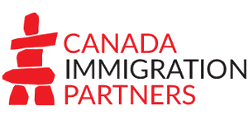Labour Market Impact Assessment: Solving a Growing Skills Shortage
It’s no secret that there’s a significant skills gap in Canada. An issue that was already looming large in Maclean’s 2014 Guide to Jobs in Canada has only been exacerbated since then. The Globe and Mail note that while the unemployment rate inflated as a result of COVID, job vacancies at the end of 2021 reached record highs. As they put it, “skills-based hiring is on the rise.”
It’s not realistic to expect that you’ll have all the skills you require in one country, despite the fact that Canada has many incredibly talented citizens and permanent residents.
The demand for hiring foreign workers in Canada was growing even before the pandemic – the number of work permits issued to non-Canadians increased by 80,000 between 2018 and 2019.
There’s a genuine need for talent from outside the country. Thankfully, the government understand that, and make it possible to hire foreign workers in a few different ways. That doesn’t mean they make it easy, though.
Here’s where to begin if you are in need of hiring foreign workers in Canada…
Immigration Jargon: The Terms You’ll Need to Understand If You are Hiring Foreign Workers in Canada
As with anything government-related, there are a lot of terms, acronyms and initializations to understand at the outset. These are a few that you’ll need to get the hiring process started.
Labour Market Impact Assessment (LMIA)
If you don’t remember anything else on this list, remember the LMIA. We’ll get into it in more detail in a later section, but in simple terms:
It’s a document that confirms you’ve made a reasonable effort to hire a citizen or permanent resident, but couldn’t find the skills necessary in Canada. For many temporary foreign workers, you can’t get a work permit without an LMIA.
Check out our detailed guide to the LMIA to find out the top five reasons applications are denied.
Employment and Social Development Canada (ESDC)
ESDC is the government department responsible for issuing the LMIA, and enforcing punishments for noncompliance after a positive LMIA has been given to an employer. They do this through Service Canada.
Temporary Foreign Worker Program (TFWP)
The hiring program that Canadian employers need to go through if they require an LMIA to secure a work permit.
International Mobility Program (IMP)
The hiring program for employers that don’t need an LMIA.
Global Talent Stream
A hiring program that allows eligible employers to hire highly-skilled foreign workers in a fraction of the usual time. This is part of the TFWP, and businesses must be referred by an approved ESDC partner.
Immigration, Refugees and Citizenship Canada (IRCC)
IRCC is the government body that processes and issues work permits.
Those documents, programs and government bodies are the building blocks for hiring a foreign worker as a Canadian employer. Now that you have an idea of what they mean and what they’re for, you’re well on your way. It’s time to get the process started.
Identifying the Category Your Hire Will Fall Under: IMP or TWFP?
One size doesn’t fit all when it comes to hiring from abroad. If you’re certain you need to find an employee outside of Canada, your first step should be to determine how the government will treat their work permit application.
Put even more simply: will you need an LMIA, or not?
There are a series of exemptions that could apply to your situation, ranging from trade agreements to accommodations for specific industries.
These could allow you to sidestep the impact assessment process. The following two documents list them in full, though they can be difficult to parse through if you’re new to the subject. If in doubt, contact an immigration professional for advice.
It’s also important to know the National Occupational Classification (NOC) of the role you’re hiring for. You can find those classifications here.
If you qualify for an exemption, your hires will apply for a work permit through the aforementioned International Mobility Program. If not, you’ll go through the TWFP, which requires an LMIA application.
Hiring in Quebec? Things are a little different. You’ll find the province-specific guidance here.
What You’ll Need Before You Can Make a Hire
We’ve covered the two different tracks you can take depending on your situation, but what do you actually need to prepare in each case?
Hiring Through the IMP
If you’re hiring through the International Mobility Program, you’ll need to:
- Pay your compliance fee (see the next section)
- Register your employment offer through the Employer Portal*
*As with everything to do with immigration and employment law, there are exceptions. You may be exempt from paying the compliance fee and using the Employer Portal. Find out more here, or seek professional advice.
Hiring Through the TFWP
If you’re applying for an LMIA and hiring through the Temporary Foreign Workers Program, you’ll need to prepare quite a lot more:
- A “genuine job offer”;
- Wages and conditions similar to that of existing employees;
- Proof that a foreign worker will:
- Fill a skill shortage
- Create or retain jobs for Canadians
- Pass skills on to Canadians and workers in Canada;
- Evidence that you’ve made an effort to hire Canadian citizens or permanent residents;
- Proof that the hire will not result in a labour dispute;
- An interview with ESDC;
- A Transition Plan for high-wage workers (see below).
A Note on LMIA Categories: High-Wage versus Low-Wage Workers
ESDC splits workers into two categories depending on whether their salary is above or below your province’s median hourly wage. High-wage workers require a Transition Plan, which you can learn more about in our LMIA guide.
The Cost of Hiring Foreign Workers in Canada
Because the LMIA application process can be lengthy and costly, it’s important not to skip that first step. Guarantee that you’re not exempt, either on your own or with the help of a consultant – you could save yourself a significant amount of time and money.
If You Don’t Need an LMIA, you’ll pay:
- An employer compliance fee of $230
- An IRCC work permit processing fee of $155
If you need an LMIA, you’ll pay:
- Both of the above, as well as:
- An LMIA processing fee of $1000
Hiring Foreign Workers in Canada — Hidden Costs and Penalties
It’s important to note that those are just the up-front costs of the LMIA. Getting something wrong on your application doesn’t mean you can make adjustments and carry on where you left off.
If there’s an error or your application is rejected for any reason, you need to create another application, and pay another $1000.
The financial implications don’t end with a positive result, either. ESDC can conduct an inspection after issuing an LMIA to ensure that employers are behaving the way their application claimed they would.
The penalties for non-compliance can be severe, ranging from a minimum of $500 to as much as $100,000 per violation. Punishments aren’t limited to fines, either. Severe transgressions can result in suspensions – during which the IRCC won’t issue any work permits to the business – and even lifetime bans.
Also, the ESDC creates a public list of organisations that have received fines, suspensions or bans.
Avoiding an Expensive Hiring Process
From miscategorizing your new hire to application errors and non-compliance, hiring a foreign worker in Canada can be an expensive process. It’s complex, and if you’re already running a business, it can be time-consuming to navigate successfully.
Applications that should have cost a couple of thousand dollars can quickly run far higher when interviews go wrong, documents are missing or the government isn’t satisfied with a job description. The skills gap you need to fill isn’t budging, but neither is the ESDC.
Investing in Professional Help Will Often Save You Money in Practice.
That’s where we come in. Book an initial consultation, and we’ll take care of that crucial first step that could save you hundreds of dollars – determining the appropriate hiring program. We only take on cases where businesses face a good chance at success, so we’ll tell you if there’s more work to be done before you’re at that stage.
Your Entire Application Process in Hiring Foreign Workers in Canada
Once the consultation’s complete, the choice is yours. Either navigate the hiring process yourself, or allow us to take the reigns. We’ve got a proven track record of success, and know exactly what ESDC, Service Canada and IRCC are looking for when it comes to job descriptions, interviews and applications.
Want to learn more about our work first? Take a look at what people are saying about Canada Immigration Partners – there’s a good chance you’ll recognize your own situation in their stories. Hope this article helps you to know more about hiring foreign workers in Canada.






